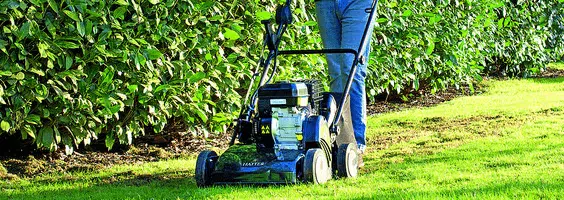Note: The term “scarifier” is used mainly by those in the UK. The word “dethatcher” is used in America to refer to exactly the same thing. This article is a review of UK models.
Hand in hand with aeration and moss removal, scarification is a common gardening job. It’s best done in summer (when the lawn has time to repair itself) on a dry day and after a fairly close cutting.
In this article I’m going to take a look at some of the best scarifiers on the market, along with offering some general buying advice. Let’s dive in…
The Short Version: Best Scarifiers
(Scroll down for in-depth reviews)
- AL-KO Scarifier/Raker (£££) (Top Pick)
- VonHaus Electric Scarifier/Raker (££)
- Bosch Electric Universal Rake 900 (££)
- Black and Decker Lawn Raker (£) (Budget Option)
What is a lawn scarifier?
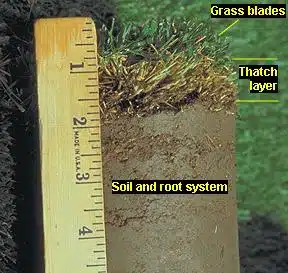
It’s difficult to describe how a scarifier works without first defining “thatch”. When grass dies, it leaves behind decaying roots. These roots form a layer of rotting organic material between the new grass and the soil. Because they contain a substance called lignin they only break down over a long period of time.
Along with other decomposing plant matter like leaves, this layer is called “thatch”.
A scarifier is essentially a set of rotatable blades that cuts through the lawn, pulling up thatch in the process. There are three basic types: manual, electric and petrol.
“Mowers” vs. rakes
When it comes to scarifiers, you have two options: thatch rakes (also called hand scarifiers) or machine-powered “mowers” (also sometimes called lawnrakers when they include aeration spikes) . This article is about electric and petrol scarifiers, but which should you choose?
Ultimately, it comes down to the size of the lawn. In a nutshell, hand scarifiers are suitable for small lawns. Electric “mowers” are best for small to medium lawns and petrol models for bigger grassy areas.
Hand scarifiers and electric scarifiers work on the same basic principle. Multiple hooked blades cut into the lawn, pulling out thatch as they turn. Electric models are easier to use for a few reasons. First off, they tend to be more thorough and consistent than manual alternatives, not to mention less labour-intensive. They will also collect the uprooted thatch for you, which means that you won’t need to collect it all with a rake.
One final point: remember that “thatch rakes” or “scarifier rakes” are different from the types of rakes that you use to collect leaves. Wire rakes, that don’t have curved blades, aren’t strong enough for pulling out thatch. For moss, on the other hand, they can actually work better than thatch rakes. This is because moss doesn’t cling to the ground like thatch.
Features to look for in a good lawn scarifier…
- Includes aerator – You can go for either a straight scarifier or a scarifier/aerator combo. With combos, you can swap the scarifier blades with aerator blades.
- Petrol vs. electric – Petrol models, on the whole, are more robust than electric models. They last longer and have greater power.
- Stores easily – Particularly if you’re only looking after a small space, make sure that you go for a model that stores easily. You’d be amazed at how well some scarifiers store!
Best Scarifiers: Top Picks
***Full Disclosure – Where appropriate, I’ve linked product images to commercial sites and Amazon (see Amazon Disclosure). If you buy from these sites, I earn a small affiliate fee, which helps me keep Urban Turnip going.***
1. AL-KO Scarifier/Raker
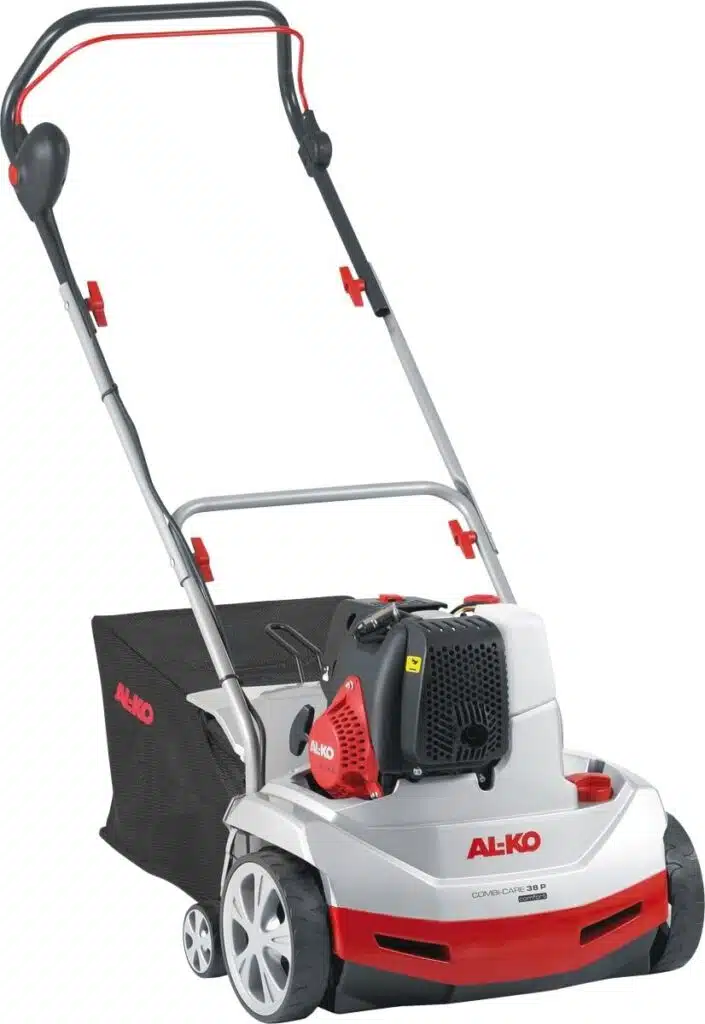
AL-KO is a German company that make a range of gardening products. This petrol-powered 2-in-1 scarifier and aerator is absolutely top-notch and is suitable for both small and large lawns (and everything in between).
The AL-KO 38P has a range of unique features. In particular, it utilises two sets of interchangeable blades (or cassettes): one for scarifying and another for aerating. You can only use one of these at a time, but they’re very easy to swap and will save you from having to buy separate machines. The scarifying blades each have three prongs and so perform better than a lot of similar alternatives.
There are also five cutting levels, so you can control the depth you want the scarifier blades to reach. The grass catcher has a capacity of 55 litres and the strong sucking action generated by the engine is excellent for catching the upturned thatch.
I really don’t think you can beat petrol machinery. There’s no messing about with long wires and they’re much longer-lasting. If you’re willing to fork out the extra money, then this is the way to go.
2. VonHaus Electric Scarifier/Raker
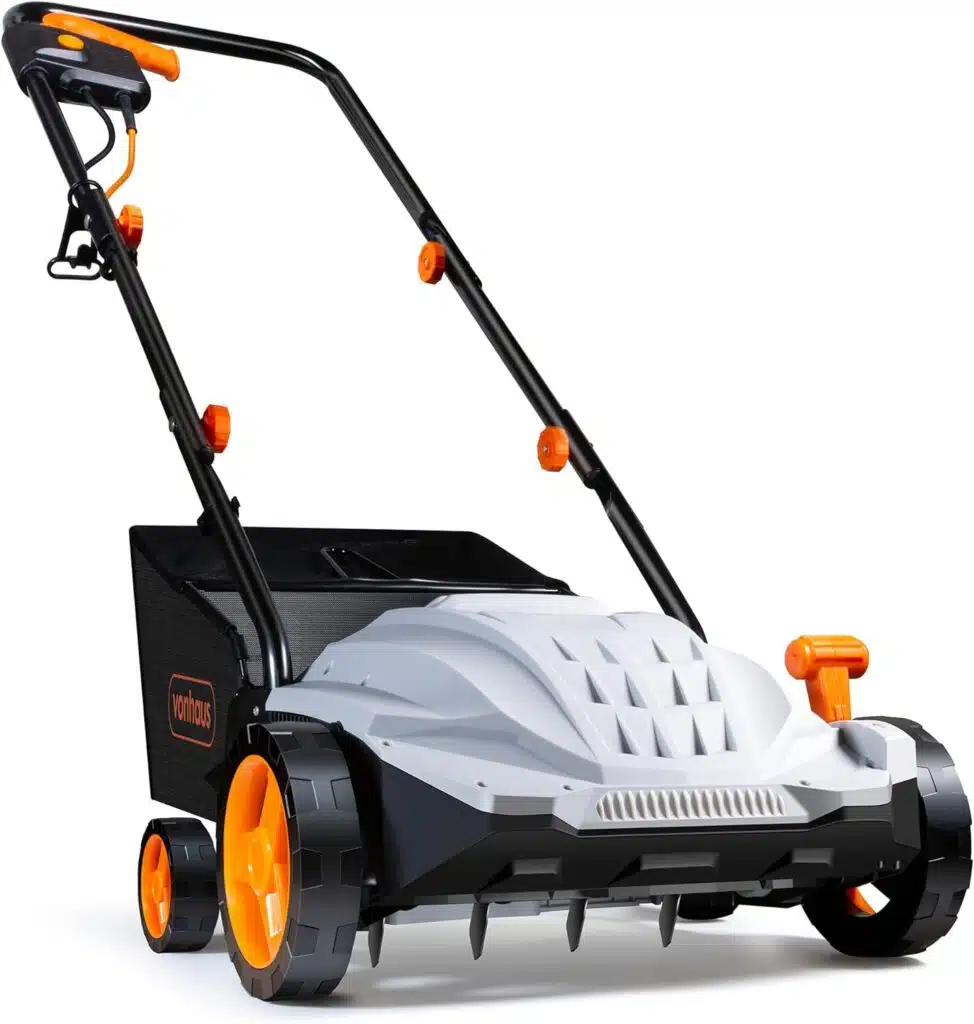
Like the model listed above, this scarifier from VonHaus (yep, it’s German) doubles up as an aerator too. The curved blades can easily be replaced with straight “tines” if you want to aerate as well as pull up thatch. If you’re not keen on getting a petrol model (or put off by the price) then this is a great alternative. It’s suitable for small to medium-sized lawns (the lead is 10m long) and is powered electrically.
There are four depth settings and it is effectively self-propelled, like most models of this kind. The 1500 watt engine is comparatively powerful as far as these electric scarifiers go and it’s a good, robust piece. If you’re looking for a mid-range model then I would recommend this one. There isn’t any suction (the thatch is essentially thrown into the grass catcher by the blades) so you may need to do some raking afterwards.
3. Bosch Electric Universal Rake 900
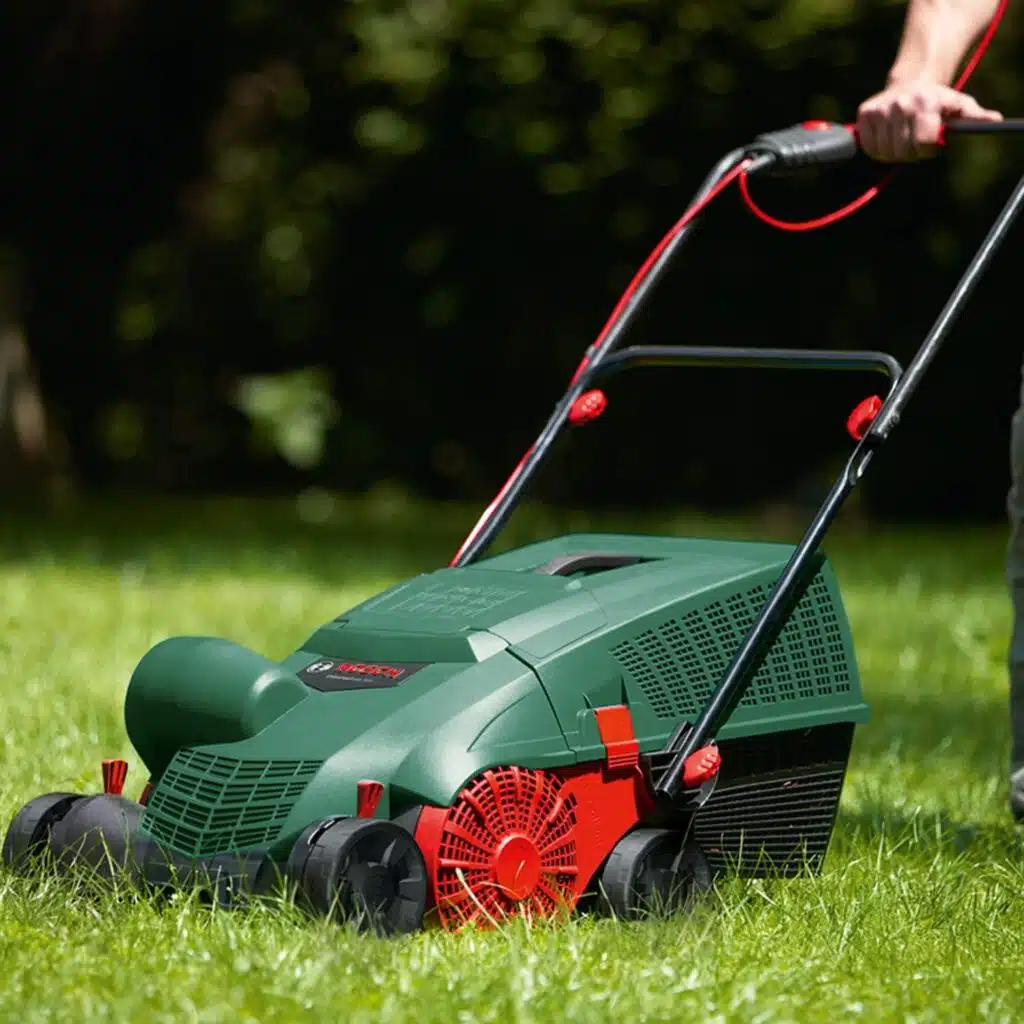
Another German entry. If you want an electric scarifier with a few more feature, this model is the way to go. Aside from the fact that it stores incredibly well (occupying about 1/3 of it’s fully extended size), it also overcomes many of the failings of other scarifiers because of the unique design of its cutting rotator.
The cutting blades are attached to a cylindrical drum which creates airflow that passes into the grass catcher, thus improving collection (a common problem with lawn scarifiers and aerators). You an also alternate between different gears to provide extra power if thatch is particularly thick. There are four height settings.
Because of the cylindrical design of the blades, and the resulting airflow, this scarifier can also be used to pick up leaves on its least powerful setting.
4. Black and Decker Lawn Raker
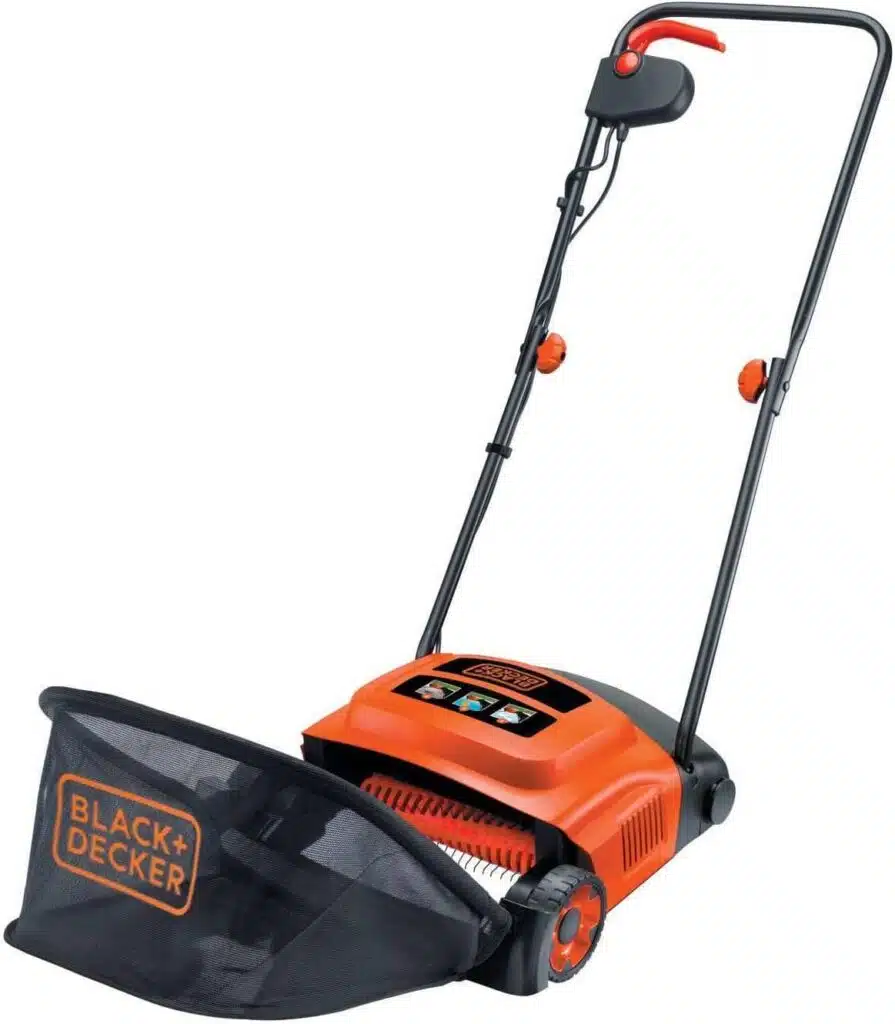
This is the perfect electric scarifier for smaller gardens. Compared to the VonHaus model, it only has a 600 watt engine but it’s far more easily stored away, consumes less power, and is easily maneuverable around small-sized gardens.
The blades resemble rake tines, rather than dethatching blades, but on their lowest setting they are more than suitable for pulling up thatch, particularly in a small area. The cord it comes with is 10 metres in length. In keeping with its compact design, it’s also very easy to store. Unusually, the debris catcher (which works brilliantly and is also foldable) is on the front.
Let us know your thoughts! Leave a comment below!
What are your thoughts? Have you tried any of the models on this list? Do you have your own suggestions? Leave a comment below and let me know!
Image credits: Scarifier-110J by Hayter Mowers
